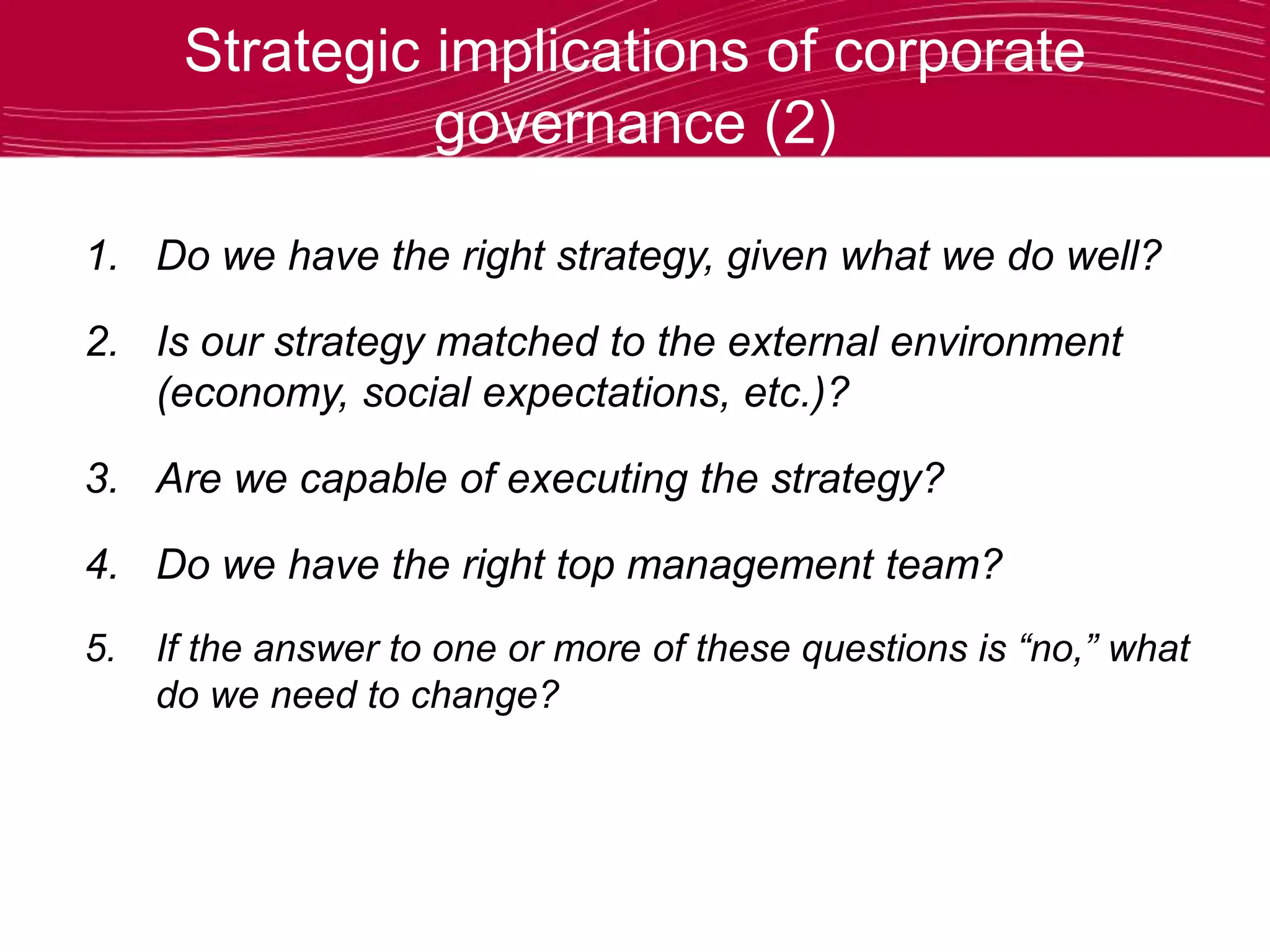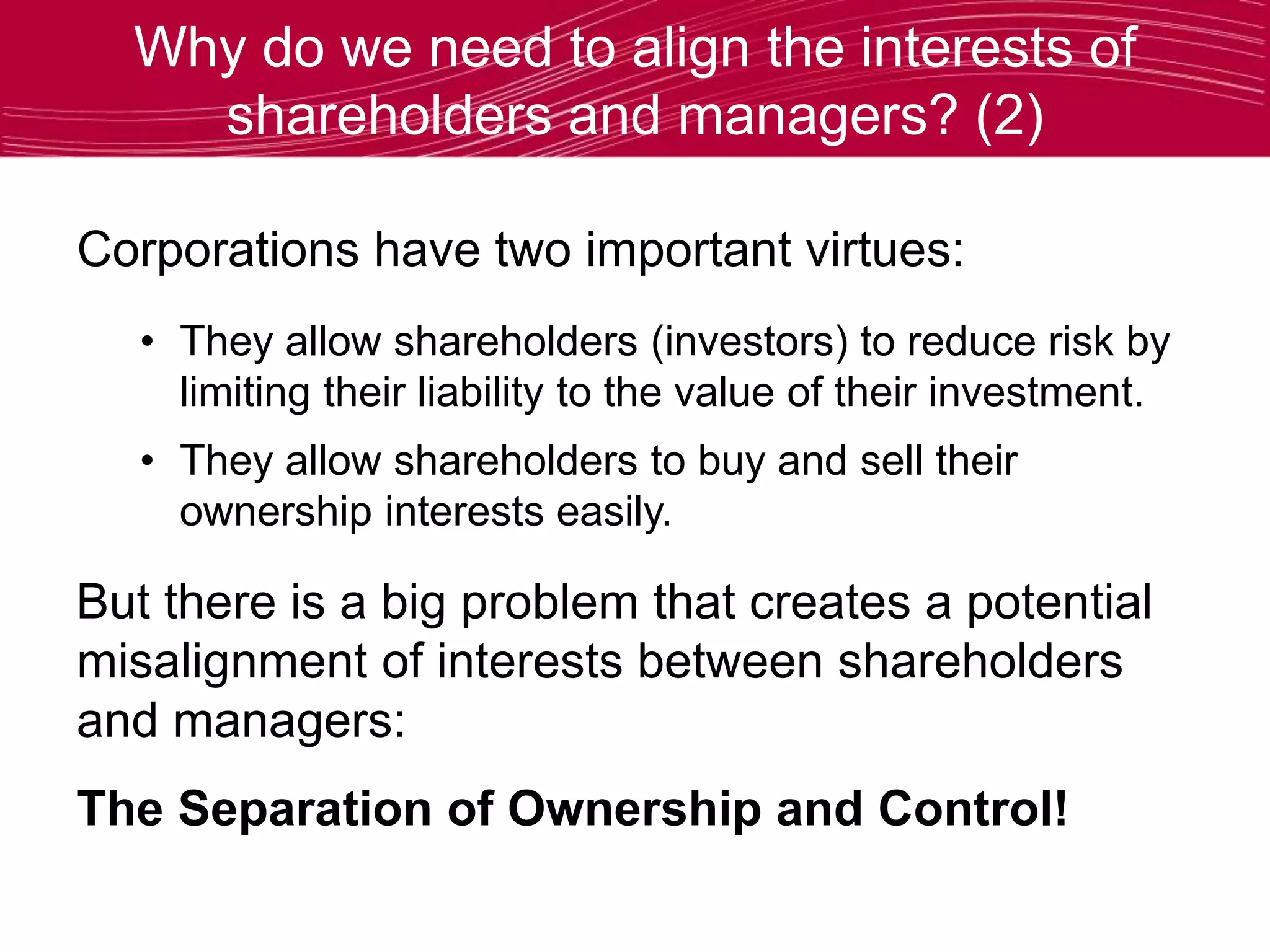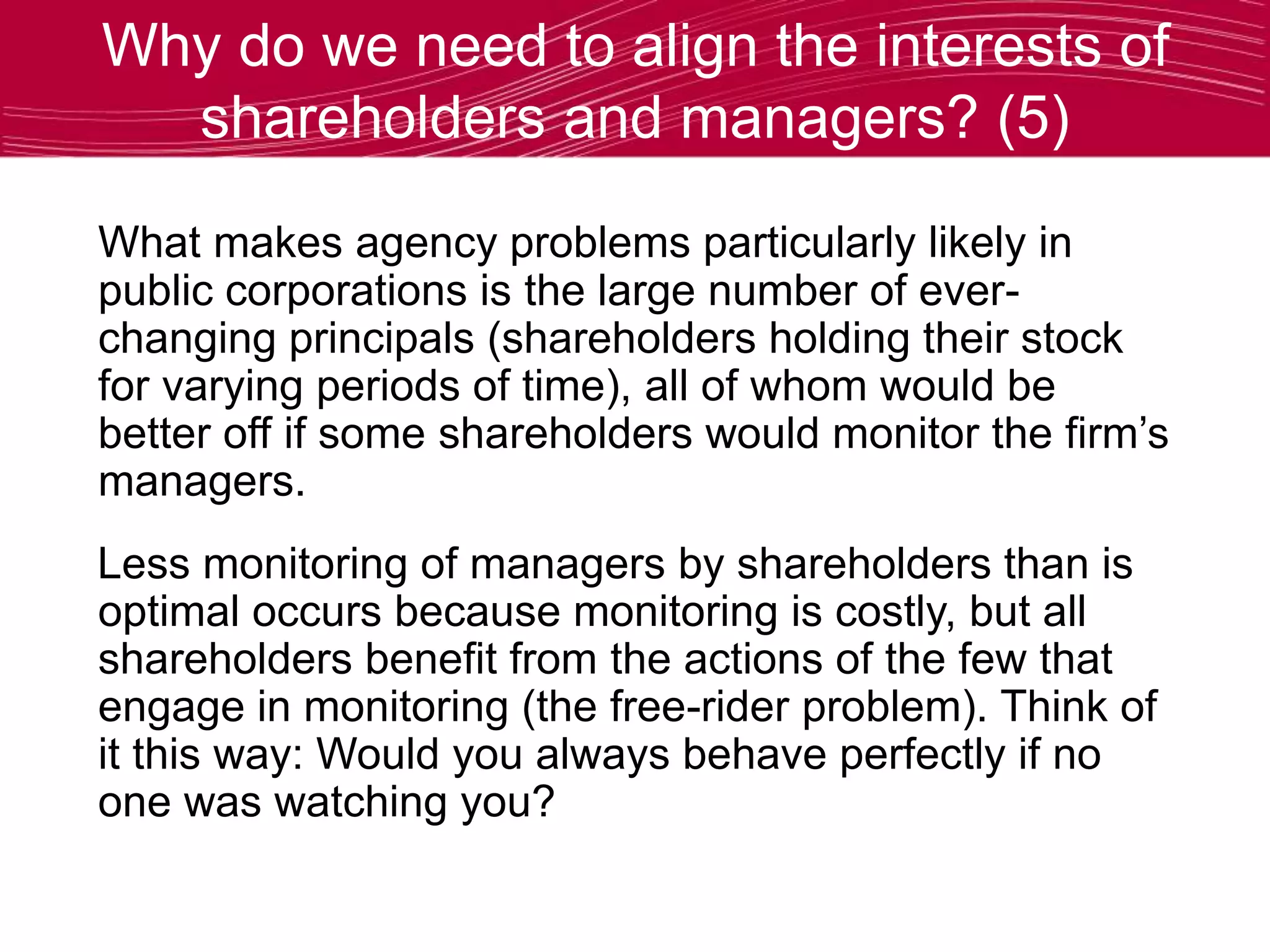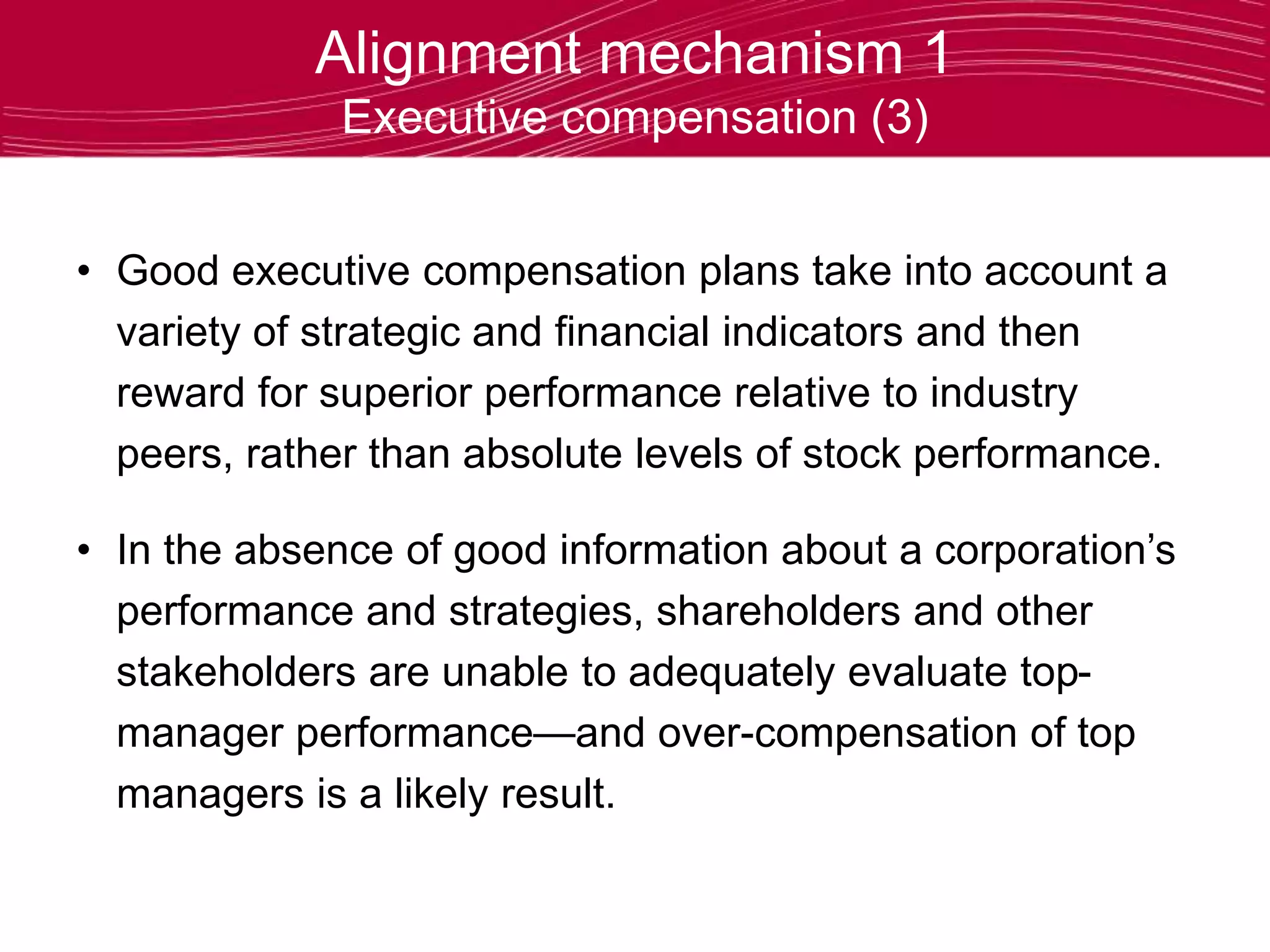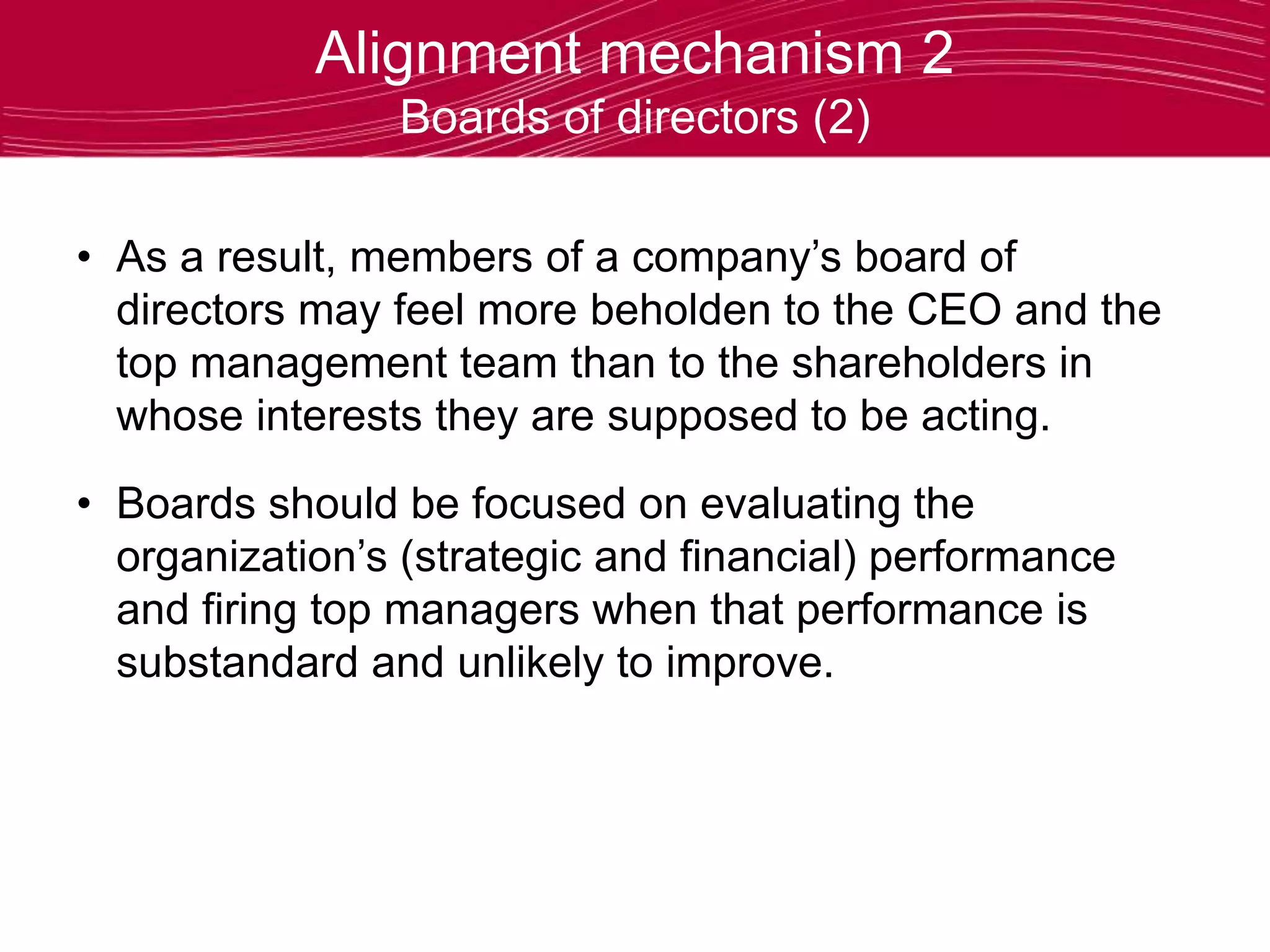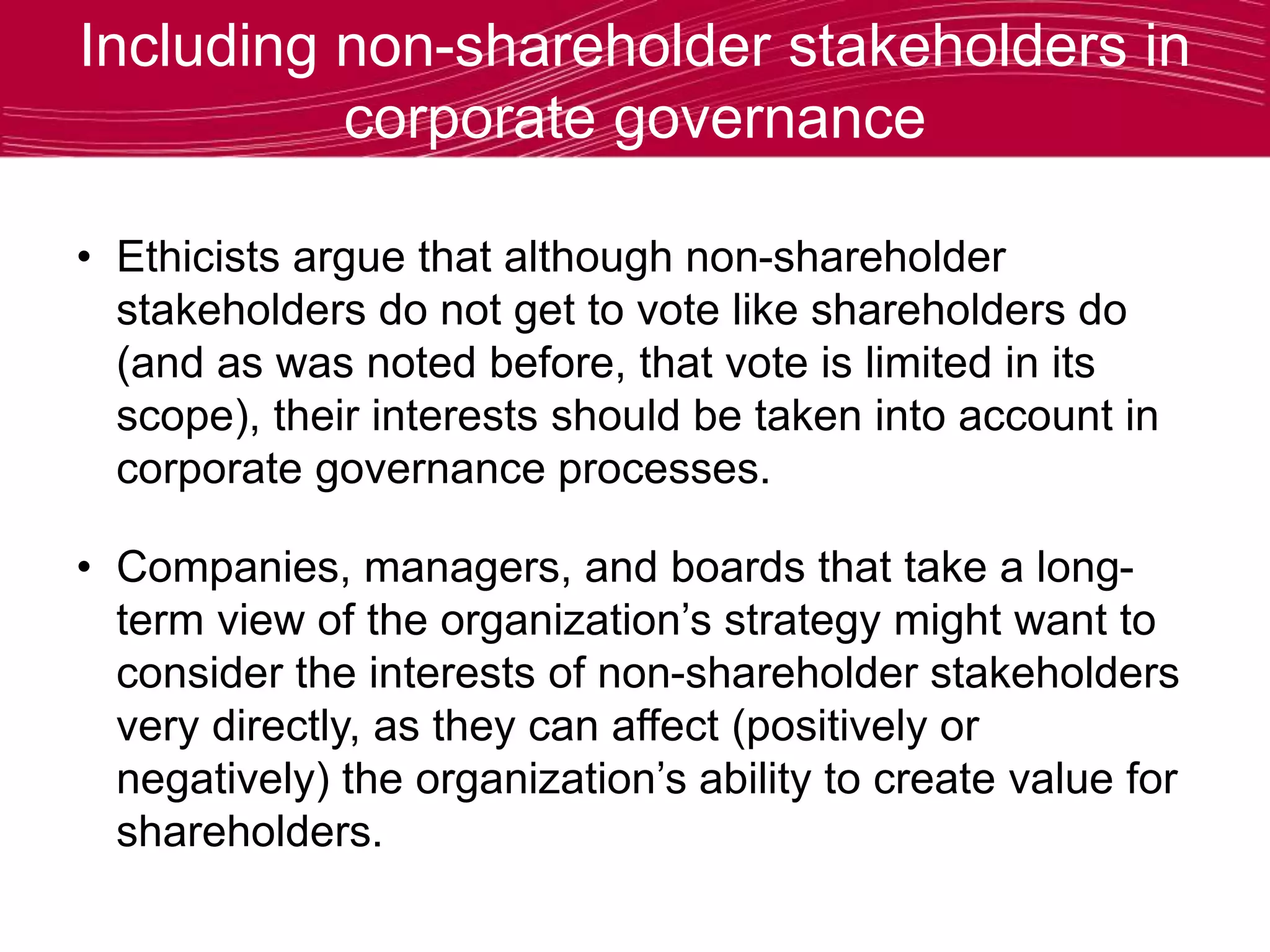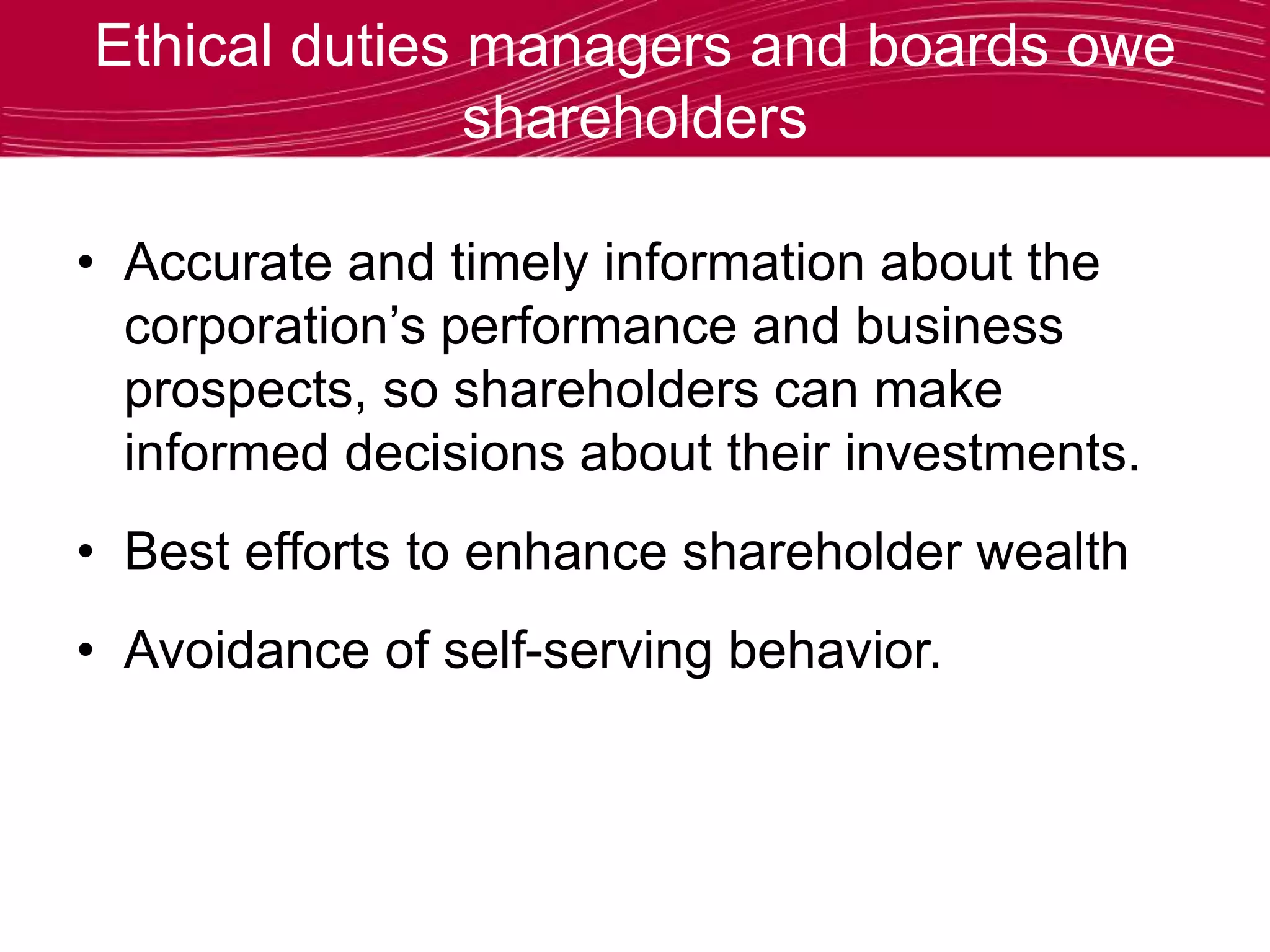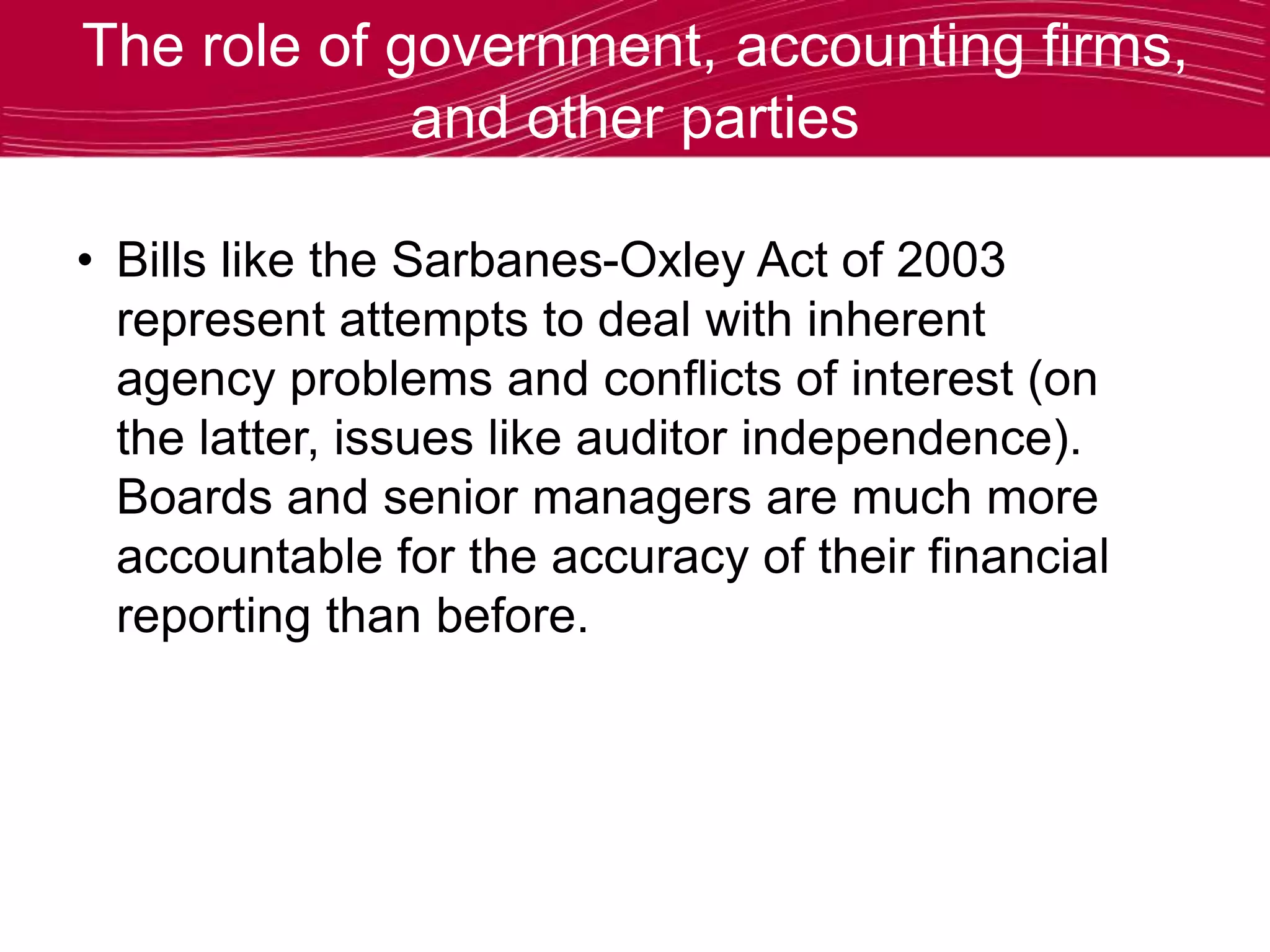Corporate governance determines how companies are directed and controlled. It has strategic and ethical implications. Bad governance leads to bad strategy and failure to meet responsibilities. Key issues include aligning manager and shareholder interests through compensation and boards, and including non-shareholder stakeholders. Future trends may include greater transparency, board accountability, and stakeholder involvement in governance.



